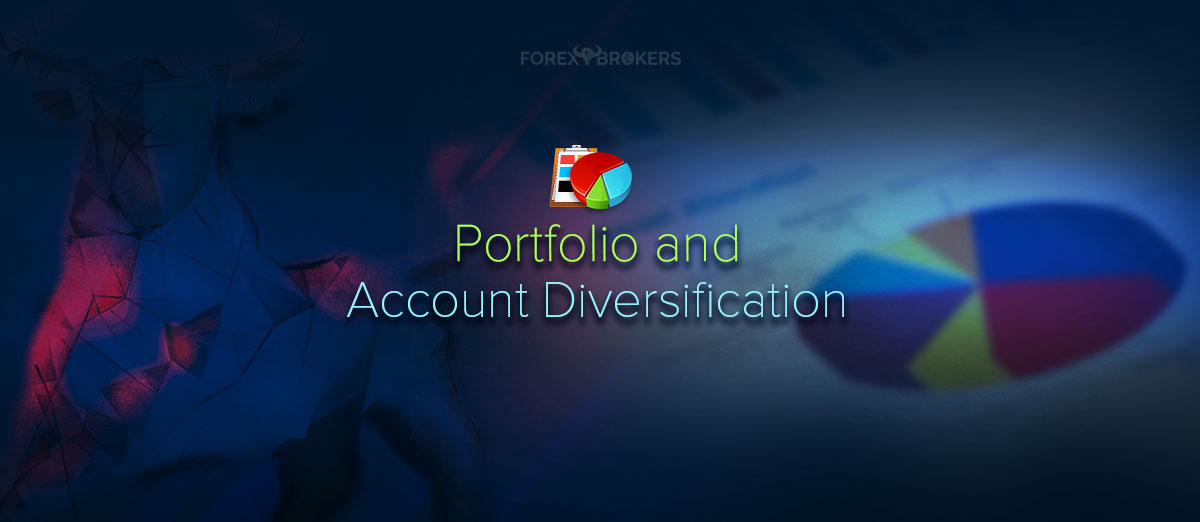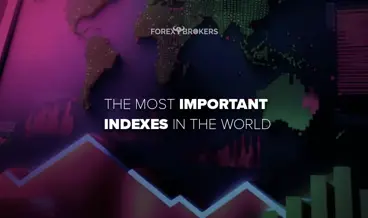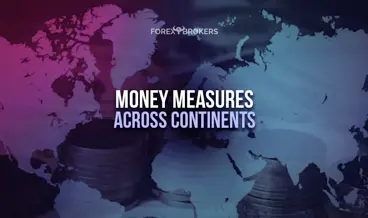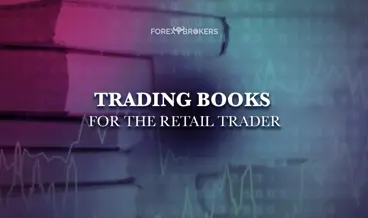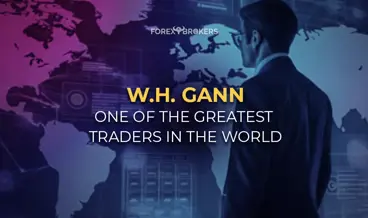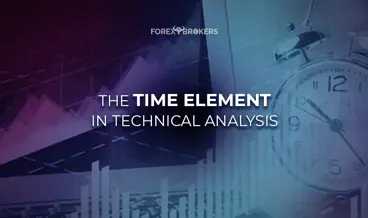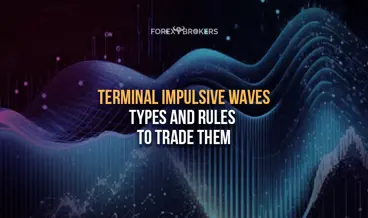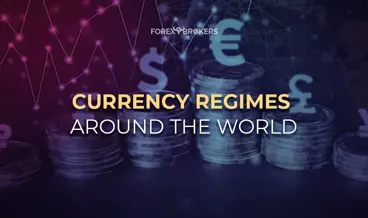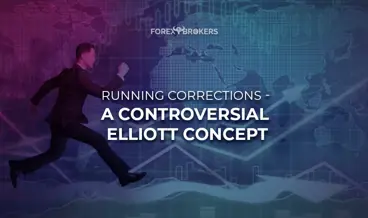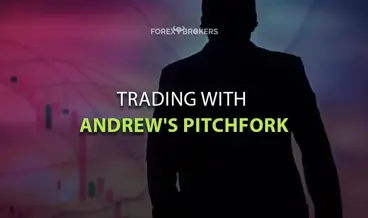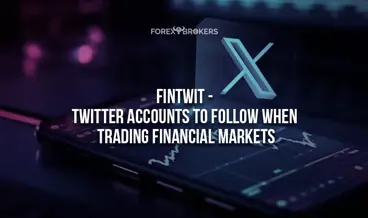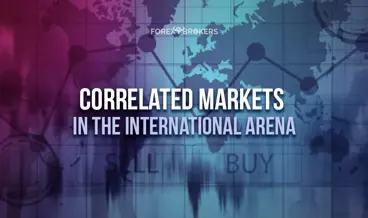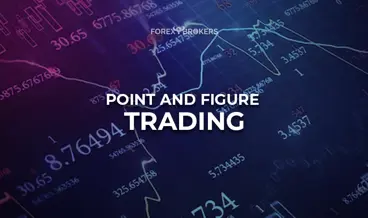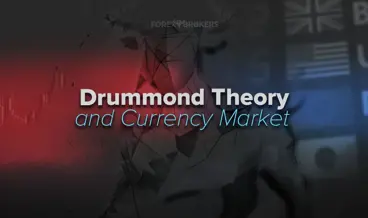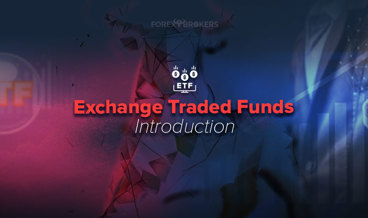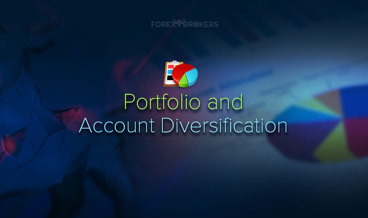Forex brokers in the twenty-first century are no longer just Forex brokers. A decade or so ago, a trader could only trade currencies from a Forex trading account. Things changed with the increase in the popularity of CFDs (Contracts for Difference) on other instruments, such as commodities, indices, cryptocurrencies, individual shares, fixed-income products, and even ETFs (Exchange Trading Funds).
Brokers were able to offer access to all these markets due to technological improvements. However, most of the other markets traded from a Forex broker’s account are offered only in the form of CFD contracts. This does not mean that the trader actually buys and sells a certain instrument, it just means that the trader places a bet on the direction of that asset and, if right, collects a profit based on the actual movement on the underlying asset. This is critical to understand when using a Forex broker account.
To exemplify, if a trader sells shares of Tesla using an account from a Forex broker, it sold a CFD, not the actual common share of Tesla. Or, if buying it, the trader does not own a share in Tesla, but only a CFD.
This article will focus on explaining the difference between the CFDs and the actual underlying markets, so that traders are aware of how things are. It does not mean that trading CFDs doesn’t allow a trader to obtain diversification benefits. Just the opposite, as trading CFDs comes with plenty of other advantages.
Besides that, we will focus on how to diversify a trading account using the instruments offered by the brokerage house. Moreover, this article explains the benefits of diversification and how to avoid having too much exposure on one side of the market. Basically – money management for the retail trading professional/investor.

What Is A CFD?
A CFD is similar to a derivatives contract, in the sense that it takes its value from the value of the underlying asset. Even the currency pairs part of most FX brokers are offered in the form of a CFD.
Another similarity with derivatives is the fact that a CFD has lower transaction costs than trading the underlying asset. Derivatives are of 2 types: forward commitments and contingent claims.
In the first category, we can include futures, forwards, and swaps. In the second category, we talk about options.
All these derivative markets have increased in importance in recent years. Some of them trade on organized exchanges (e.g., futures), and others trade over the counter (e.g., forwards, swaps). Some represent the obligation to take action at some point in the future, while others represent the right to buy or sell the underlying asset in the future.
The importance of the derivatives market has grown exponentially lately. Market participants remember how the crude oil price settled into negative territory in April 2020. The move, while coming from the futures market, triggered ample reactions on the FX market too. Because the price of oil is directly correlated with commodity currencies, the move lower in the price of oil triggered tremendous weakness in the Canadian dollar too.
A CFD gives the trader the opportunity to short an asset without actually owning it. Moreover, the costs associated with the process are significantly lower than when shorting the actual asset. Therefore, traders may gain exposure to various markets at a reduced cost. This way, it becomes easier to diversify a trading account.
How to Trade a CFD?
The easiest way to understand how to trade a CFD is to think of its name – a Contract for Difference. Just like the name suggests, this is a contract that pays off for the difference in the underlying asset’s movement.
More precisely, by buying a CFD, or going long, traders expect the price of the underlying asset to increase. If it does so, traders may book a profit. If not, they may book a loss.
Until a position is closed, or squared, the account shows only unrealized gains or losses. All positions are eventually squared, to mark a profit or a loss.
Besides the actual gain or loss, the trader must deduct the adjacent costs incurred by trading the CFD. Such costs are potential negative swaps, commissions, and spreads.
But why are CFDs so attractive? The right answer is that they give the trader the possibility to short the underlying asset as easily as going long.
CFD vs. Common Shares
Common or ordinary shares represent shareholders’ residual interest in a company. By owning a share in a publicly listed company, the shareholder has the right to vote and to receive dividends, should any dividend be paid. It must be mentioned here that a company is not obligated to pay dividends – it may or may not choose to do so.
Typically, traders buy shares in a company without using a margin. These are investors. Speculators, though, use the margin offered by the brokerage house.
For example, if a trader wants to buy 100 shares of Microsoft, the minimum amount to come up with is the initial margin required by the broker. For the rest, the trader turns to the broker and borrows the difference, paying interest on the borrowed amount. Should the price of the shares only rise from the moment they were purchased, the trader pays only the interest on the borrowed amount and the transaction fees.
If a trader wants to sell the shares of a company due to finding the price overvalued, the shares must be first borrowed from the broker, and only after that are they sold short. The costs for both buying and selling common shares are higher than for trading CFDs.
However, by trading a CFD, the trader forgoes the benefits of owning a share. While it is cheaper to trade a CFD to benefit from the movement in a company’s share price, some advantages of share ownership disappear.
In other words, when trading shares of a company from an FX broker’s account, think of the fact that these are CFDs and not actual shares. The only benefit from trading them is the eventual profit resulting from the transaction.
Pros and Cons of CFDs
The biggest advantage of trading CFDs is the low transaction cost. But the best way to judge a CFD is to think of the benefits and costs of actually owning the asset.
Benefits of Owning the Underlying Asset
Let’s start with equities. One of the reasons why traders own equities is the potential for a dividend. However, as mentioned earlier, companies may or may not pay a dividend. In this case, holding equities may still make sense if the trader wants to diversify its overall portfolio. Or, if the trader wants to have a say in a company’s decisions, the election process of its board members, etc. As long as shares are publicly listed, traders have the opportunity to speculate on their volatility.
This is where CFDs kick in. Instead of selling the actual shares in a portfolio, the trader may want to sell CFDs that track the share’s price. If the share price indeed drops, the trader may book the profits on the CFDs and use the proceeds to add to the common shares portfolio, thus lowering the average price.
How about bonds? By owning a bond, traders receive regular payments in the form of coupons. Coupons may be paid monthly, quarterly, semiannually or yearly, and, when the bond reaches maturity, the principal is returned. During its life, the price of the bond varies based on the direction of the market interest rates. If the yields rise, the price of bonds declines, and if the yields fall, the price of bonds rises. Basically, there is an inverse relationship between the two.
Similarly to owning common shares, instead of selling the bond and forgoing the coupon payments, traders may simply trade a CFD that tracks Treasury yields in an attempt to make the most of the correlation explained earlier.
Another benefit, though with limited applicability in this context, is the so-called convenience yields. It pertains mostly to commodity trading, but more about the concept will appear in future articles part of this trading academy.
CFDs, therefore, are an appropriate way to diversify the overall portfolio. Instead of selling common shares, CFDs offer a cheaper alternative. Thus, it gives the trader the opportunity to diversify and even hedge a position, fully or partially. The same is valid when trading fixed-income.
How to Make the Most of a Forex Trading Account
So far, we have introduced the concept of a CFD and hinted at how CFDs allow for proper diversification. You might ask – what does this have to do with a Forex trading account?
Following intense competition among brokerage houses, a Forex trading account’s offering increases dramatically. The CFDs offered are not only currency pairs, but also stock market indices from around the world, commodities, treasuries, and so on.
A Forex trading account, therefore, might be diversified within the Forex portfolio and with other assets outside of the Forex portfolio. The same principle is valid the other way around – other portfolios may be diversified within the portfolio’s asset classes and outside of the portfolio by using CFDs in the Forex portfolio.
For a better understanding of the process, traders should think of the financial assets available to invest in today. The next step is to define the investment amount – how much is available for investment purposes?
Before going into more detail regarding the processes described above, there are some concepts that must be understood first:
- How much diversification is needed?
- Correlated markets in the international arena
- The role of cash
- Leverage
- Overtrading
Diversification – How Much is Too Much?
Diversification refers to actions taken by the portfolio manager (i.e., trader, in the case of the retail industry) to spread the risk over various asset classes or within the same asset class. To fully understand diversification, one needs to understand the various types of risk and the various types of investors.
On the one hand, we talk about systematic and non-systematic risk. The first, also called market risk, cannot be diversified away. To exemplify, think of the COVID-19 pandemic that started in 2020.
All markets dropped simultaneously, it was a systematic risk, and no matter what stock you owned, they all went down. In other words, there is little that diversification can do to a stock portfolio in front of systematic risk.
And then there is non-systematic risk. This is the risk that can be fully diversified away, using correlations between different asset classes and within the same class.
How about investors? People are different and so the ability to take risks differs from person to person. Risk averse investors typically invest in financial markets. They expect to be compensated for the risk taken by an increase in asset prices, such as an increase in the share price of a company.
There is a thin line between a diversified portfolio and a fully hedged one. When fully hedged, the portfolio misses opportunities to grow. The opportunity cost, therefore, must be considered when diversifying a trading account.

Correlated Markets
All financial markets are correlated and they often move in similar fashions. The best example to use is the risk-on/risk-off environment, very common in financial markets. During such periods, the equities, fixed-income, commodities, and currencies have a synchronized move.
Therefore, diversification is difficult to obtain in such environments. Correlations are negative and positive, and by adding an asset to a portfolio the idea is to keep the exposure as is, and not to increase it. Higher exposure means higher risk, and therefore adding an uncorrelated asset is key to obtaining diversification benefits.
Correlations exist within the currency market and outside of it. Within the currency market, the most notable correlations are those between the Japanese yen (JPY) pairs, and those between the commodity currencies pairs. Outside of the currency market, the best example is given by the price of oil and how it directly influences the Canadian dollar (CAD) and other currencies belonging to oil producing countries.
But other correlations exist in financial markets that indirectly affect the currency market. For instance, there is an inverse correlation between the price of gold and the US Treasury yields. Because gold influences the Australian dollar, traders may calculate the impact that the rise and fall in yields have on the Aussie pairs.
Cash Is King
No portfolio should run out of cash. In other words, a cash position is mandatory when investing because how else would a trader take advantage of new market opportunities? Think of the stock market and imagine there is a decline and you want to buy the deep. For that, one needs cash and cash is scarce in times of increased market volatility.
The most difficult thing is to find the appropriate level of cash to maintain at all times. For this, the futures market offers the solution.
When investing in futures, traders engage in a contract that stipulates the terms. If you want, the contract is like the indenture from the fixed-income markets.
The clearinghouse settles the price of a futures contract daily. At the end of the trading day, based on how the underlying market moved, the accounts of the 2 parties (long and short) are credited or debited. Throughout the life of the futures contract, the parties must maintain a certain level of liquidity in their accounts. First, it is the initial margin, typically around 10% of the contract’s value, and then it is the maintenance margin. If the funds in the account drop below the maintenance margin, the trader must provide additional capital not to the maintenance margin, but to the initial margin. A similar principle can be used when trading other financial markets, and traders keep 10%–15% in cash to use when the opportunity arises.
Understanding Leverage
Leverage can break the account easily. Higher leverage equals higher risk, but also higher opportunities. In other words, risk-seeking traders will always aim at “hitting the jackpot” by using extensive leverage to maximize their returns.
To exemplify, think of Tesla’s share price. It rose over 600% in 2020 alone, with basically no drawdown. Traders that used leverage were able to profit more from the advance for the simple reason that they bought more shares than their capital allowed.
Trading on margin is very common in the United States and the traders borrow money from the brokers to buy more shares. If the price does not decline below the margin call level, the trader will just pay interest on the borrowed money but will ride the bullish trend with more shares.
Leverage, therefore, works both ways. If we used a positive example, let’s also use a negative one. One of the main events in Q1 2021 was the rapid downfall of Archegos Capital Management. The fund lost $20 billion and inflicted damage to brokers too as they were forced to dump the shares in the market.
How to Avoid Overtrading
Overtrading is another thing to consider when diversifying the trading account. Just like in the case of finding the optimal cash level and leverage, the trader needs to do the same to find the point where overtrading starts.
Overtrading refers to the increased exposure on only one side of the market. For example, if the trader is long on the EURUSD pair and also buys the GBPUSD and the AUDUSD, the exposure is heavily short on the USD and a change in the USD trend may have a big impact on the trading account.
Diversification Within a Forex Portfolio
As mentioned in the first part of this article, CFDs allowed brokers to give access to other markets from a simple Forex broker account. Therefore a Forex trader should use all the financial assets that the broker offers in order to diversify the portfolio. Because of that, one of the main requirements when looking for a Forex broker is the number of markets it offers. If the broker offers only currency trading, the trader is limited to the currency market and diversification benefits are difficult to obtain.
When the trader’s funds arrive in the trading account, that is a 100% cash position. From that moment on, every trade blocks some margin, and the cash position shrinks in consequence.
Steps to Diversify a Portfolio
The best trading plan must start with the risk involved and continue with realistic expectations. In other words, think of what you want from the financial markets.
The legendary investor Warren Buffett used to say that rule number 1 in investing is to avoid losing, and rule number 2 is don’t forget rule number one. In other words, it all starts and ends with capital preservation.
Sure enough, temptations are everywhere. Every day there is something that moves the currency market – economic news from the eurozone, or a Fed member delivering a speech. But that doesn’t mean that just because the markets are open, one should take a trade.
There are many considerations before opening a trade, starting with the capital involved, the time available to do the due diligence (technical or fundamental analysis), the underlying assets available to trade, the correlation between the assets, and the omnipresent opportunity cost.
Also, a trader should know from the start what the expectations are, and aim for that goal. For example, if I’m comfortable with making 20% a year, that level of reward is a determinant for the risk I’m willing to take.
Capital
It all starts with capital. A well-funded trading account needs to be not too small, nor too big. Let’s think about both situations for a bit.
If a trader comes to the FX market with a thousand dollars and expects to grow it over time, it will have a hard time doing so. The problem comes from the amount – it is too small to care for the money at risk, and thus the trader’s attention is “not there.”
Therefore, the invested amount must be big enough to care, but not big enough to exceed what the broker can cover. Trading should be done through a regulated entity, and the financial authorities usually have the tools and systems in place to protect the customer in case something happens to the broker. But on top of that, the trader should look for private insurance, too. Some brokerage houses offer additional insurance up to $500k or more, so the more, the better.
A well-funded account means that by the time the diversification process starts, with the cash position to be maintained constantly, there should be enough capital left to trade without constraints.
At this stage, capital refers to the initial funds and the cash position to maintain. For the cash position, aggressive traders settle for 15%, others for 20%, and some very conservative traders prefer not to be invested more than 50% of the trading account at any one point in time.
However, it all depends on the leverage level. For example, on a 1:30 leveraged account, the available margin is much lower than if using an account with 1:400 leverage. On the other hand, in most advanced economies nowadays 1:30 is the most commonly offered leverage, as financial regulators intervened in recent years to protect customers’ interests.
Time
Time is crucial to diversification in Forex, especially during the due diligence process. Even the most sophisticated portfolio management strategy starts with understanding the client’s needs, putting everything in writing, planning, and only after that executing.

Therefore, time is crucial to do the technical or fundamental analysis, or both, before executing the trades. Moreover, time to analyze the market, to be there to take a trade at the opportune moment, is key.
Some traders, for example, have a day job. In fact, most retail traders have a day job and trade in their free time. This is a recipe for failure and the only way to avoid losses is to invest on the bigger timeframes, like the daily timeframe or even the weekly one.
Underlying Assets
Choosing the assets and the exposure on each asset is part of the diversification process. For example, let’s assume I am bullish on the US dollar. For whatever reason, my take is that the US dollar should decline based on the strong economic recovery expected after the pandemic and I want to be long on the dollar.
The first thing to do is to define how much of an exposure I want to have on this trade – the long dollar trade. Say, 10% of the trading account. Second, I must find the best vehicle or financial instruments to use so that the costs are kept low. I had better look at swap costs, how much they would be if the trade takes more than planned, and account for these costs too, besides the regular commissions and swaps charged by the broker.
For example, I may decide to go long on USDCHF because it pays a positive swap, rather than going short EURUSD, which is paying a negative swap at the time of writing this article. I also may choose to avoid exposure to the stock market indices, because when the dollar is rising, the stock indices usually correct. This is the point of the next paragraph – understanding the correlations between the underlying assets.

Correlation Between Underlying Assets
Remember that within a Forex portfolio, the correlation considers mostly CFDs. Therefore, if one buys shares of Tesla because of its Bitcoin exposure, that’s not necessarily possible from an FX account. The only thing that is possible is to buy Tesla CFDs and if the underlying assets, the shares of Tesla, rise because of Bitcoin’s bullish rise, then a profit is made on the CFD, but not on the actual share.
Therefore, the correlation between the underlying assets in an FX trading account is mostly between CFDs. As such, traders must consider the cost component of trading and owning CFDs, but also the margin blocked by a certain volume on different assets. Traditionally, CFDs on shares or indices require a bigger margin than similar products on a regular currency pair.
Opportunity Cost
The opportunity cost is the cost of forgone benefits. In other words, the cost associated with not investing the money in something else.
Once again, Warren Buffett provides the best example of an opportunity cost. Early in his career, he bought a house. To this day, he says the house is the worst investment he ever made. If he had invested that money in Berkshire Hathaway, his investment vehicle, that amount would yield billions today. Hence, the opportunity cost of buying that house at that moment is quantified in billions today.
Using a Forex Trading Account as Part of Portfolio Management Strategy
Besides diversification within an FX portfolio, an investor may decide to extend its diversification horizon. Cash is one thing, FX is another, and so are CFDs. How about getting exposure on other markets, directly buying and selling assets?
A portfolio management strategy comprises all the investable assets available to the trader. Based on different analyses of various markets, the trader may decide to be long on equities, short on a certain CFD, have a put protection, have a hedge against inflation, and still give the account plenty of space to grow.
Long Stock/Short CFD
One of the best ways to protect against a potential downside in the stock market is to short a CFD in the FX account. Therefore, a trader may be long on, say, Apple, but at the same time uses a CFD on Apple to go short when he has doubts about the upside potential. The idea here is to make the most of the short moves as well, via the CFD, while remaining invested in the stock market to receive the dividend.
Long Benchmark/Long Put
Every portfolio manager uses a benchmark to compare results against. Most of the industry compares results against the S&P500, viewed as the benchmark for the overall market.
The S&P500 index is used by many passive investors to “track” the market. Having said that, the index gives exposure to the overall market and, for protection, a long put position is bought as well. The put has a cost and ideally will expire out of the money, the more the S&P500 rises. It is, if you want, like buying insurance for a house or car, in the hope that you will never need to use it. Hence, the long put serves as insurance, just in case the market declines. Once again, the S&P500 may be purchased in the form of a CFD, while the put is a derivative, a contingent claim, an option.
Who Needs Diversification?
The answer to this question is – everybody. Because a diversified portfolio has a cash position too, the investor will still have resources to add to a promising trade, or to chase new opportunities, while being diversified.
Even the most experienced traders have a tough time finding the right diversification of a portfolio. How much is too much, after all?
Diversification works only for the non-systematic risk. This risk can be 100% diversified away, but the instruments used to obtain such diversification are the ones that determine the portfolio’s profitability level.
Even the most simple FX strategy may require diversification from time to time. Or, maybe, always. If one wants to invest $1,000, choosing only 1 asset for the full amount gives full exposure to that asset. Instead, the trader may decide to invest one-third in 1 asset, and the other two-thirds in 2 different assets, uncorrelated with the initial one.
Conclusion
The ultimate purpose of diversification is to avoid unnecessary risk. Yet, as explained throughout this article, full protection against risk does not exist.
Think of the stock market. It is riskier than, say, the bond market. By lending money to a government, for example, investors benefit from regular coupon payments and the return of the principal by the time the bond reaches maturity. Thus, there is literally no risk involved, as in theory, sovereign governments in the developed world cannot default, especially because they are in charge of printing their own currency.
But the return is not that high when investing in the equity market or in the currency market. As such, for more risk taken, investors require a bigger return.
Also, the more risk is taken, the bigger the need for diversification and the bigger the struggle to obtain diversification benefits. Adding uncorrelated assets to a portfolio is a relatively simple process at the start. Further down the road, the process becomes complicated. Imagine that an investor builds a 5% position in gold, to protect against inflation. Adding any other asset correlated with the gold market will increase the desired exposure. Hence, buying the stocks of a gold mining company or an ETF that tracks the gold industry will no longer diversify the portfolio.
To sum up, diversification in trading is a must, but finding the right level is a question of the risk appetite of every investor. The more successful the portfolio manager is at diversifying away from the non-systematic risk, the higher the diversification level and the better the portfolio is protected.
